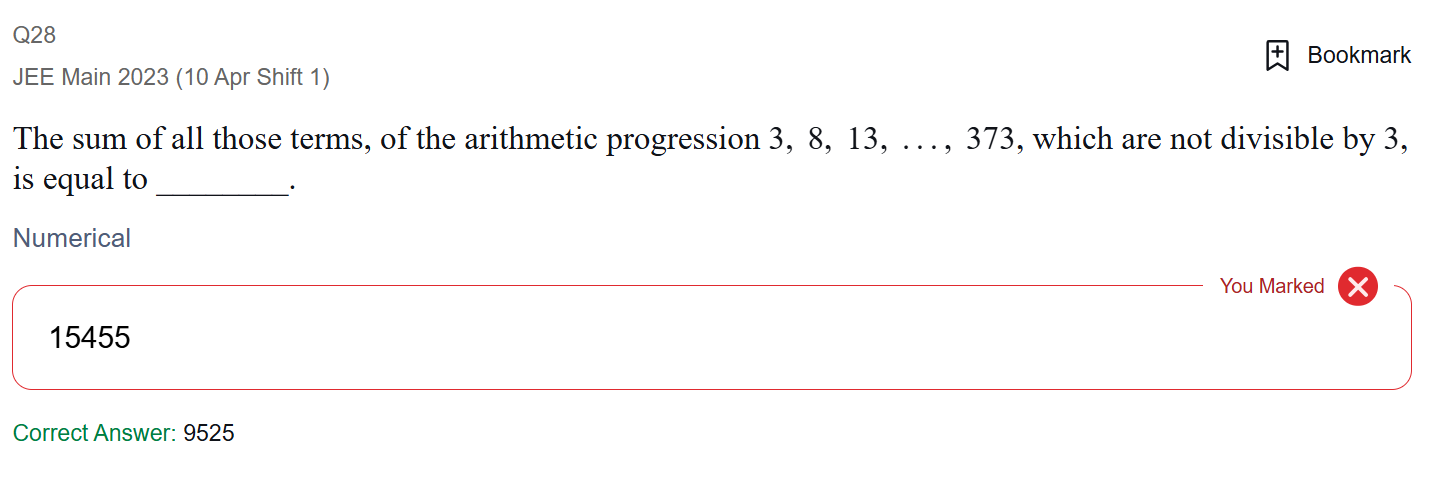A.P.
I solved by first expanding the ap and then eliminating the terms divisible by 3 then i formed 2 different aps (one starting with 8 and the other with 13) each with cd = 15 and summed them up separately. but my answer is wrong whereas the solution given takes the sum of this normal ap first then subtracts it with sum of multiples of 3 in it. i want to understand why my method was wrong?
